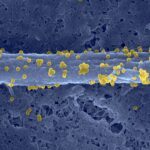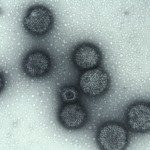Link to Pubmed [PMID] – 21801611
Link to DOI – 10.3201/eid1708.110278
Emerg Infect Dis 2011 Aug; 17(8): 1364-70
While studying the virome of the skin surface of a patient with a Merkel cell carcinoma (MCC) by using unbiased, high-throughput sequencing, we identified a human polyomavirus nearly identical to human polyomavirus 9, a virus recently reported in blood and urine of renal transplantion patients and closely related to the African green monkey lymphotropic polyomavirus. Specific PCR analysis further identified this virus in 2/8 patients with MCC but in only 1/111 controls without MCC. This virus was shed for ≥20 months by the MCC index patient and was on the skin of the spouse of the index patient. These results provide information on the viral ecology of human skin and raise new questions regarding the pathology of virus-associated skin disorders.


